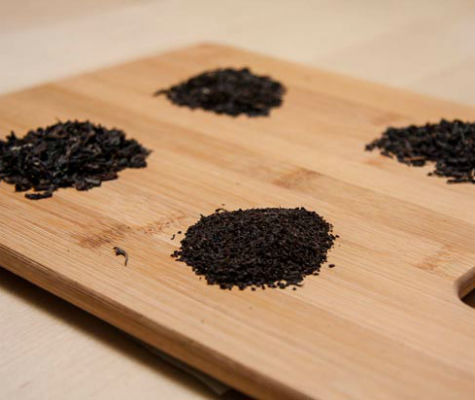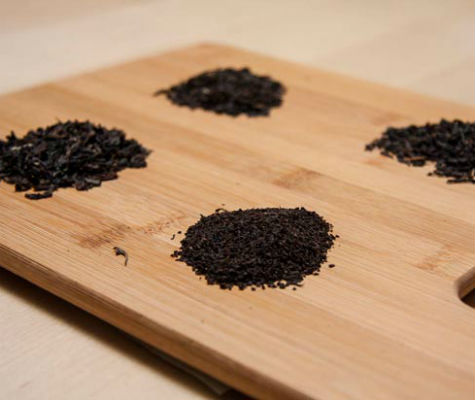A Beginner's Guide To Tea
When it comes to tea, there's a dizzying amount of choices available these days. From Earl Grey to Constant Comment, most teas come from the same bushy plant, Camellia Sinensis. Any tea that doesn't come from this plant aren't actually "tea" per se — these are referred to as tisane (or sometimes teasan). These are herbal blends and can contain just about anything, but most often are made from flowers or other bushes with strong flavors.
A Beginner's Guide to Tea (Slideshow)
With true tea, on the other hand, the flavor of the different types is determined by where the tea is grown, the time of year that it is picked, and how much it is oxidized after picking. The major families of tea include black (also called red tea), green, white, oolong, and fermented — each possessing its own distinct flavors.
In general, the quality of the tea can be judged by its appearance. Cheaper teas are finely chopped leaves and stems — these are often sold in boxes of tea bags. These teas are very easy to prepare: just pop them in a mug and add hot water. Since so much of the leaf is already exposed to the water, you usually don't need to worry about over-brewing these teas.
Higher quality teas will usually have the full leaf intact. These teas require much more precision in the temperature of the water used, the amount of tea used, and the length of time that the leaves are allowed to steep. The easiest way to prepare these is to purchase a wire steeping basket that fits over your favorite mug – just pour hot water over, and pull the basket off the mug after the recommended time.
There are many fancier preparation methods as well, depending on how much you're willing to spend from cheap glass and ceramic tea bowls and cups to very expensive pots made from clay or iron that have been aged and seasoned. It's best to start simple until you know what your needs are and you determine how you best like to enjoy tea, and then purchase the teaware to match as your tastes grow and change.
This is also true of the tea itself — there are plenty of delicious teas available without having to spend hundreds of dollars. It's a good idea to try many different types until you find what you like best, and go from there. If you have a local tea shop, stop in to ask if they do tastings, to learn about new teas you haven't yet tried.
Black Tea
Black tea is the most popular type of tea in Europe and the United States, where large quantities are produced by companies such as Lipton, Twinings, and Tetley. It's well known for its rich, bitter flavor with distinct citrus notes, which comes from being fully oxidized after picking. Common varieties include Ceylon, Assam, and Darjeeling — most named for where they're grown. Many of these countries began producing tea during the time when the British discovered and started cultivating tea in its colonies.
English Breakfast, Etc.
Most popular black teas in the west, are blends of Ceylon, Assam, and Kenyan varieties and packages with fanciful names such as English Breakfast or Constant Comment. They also often include extra ingredients to make cheaper tea have the same sort of flavors that more expensive varieties possess naturally. For instance, the popular Earl Grey contains oil or rind from the bergamot orange. Chinese teas, on the other hand, are usually a single type of tea with no additives. The daily British tea time almost always features a black tea blend, usually mixed with milk and sugar.

